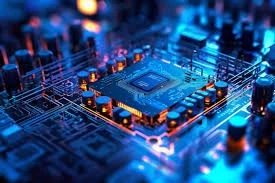Choosing the right embedded hardware solutions for your project is a critical decision that can significantly impact the success of your embedded systems. At Jenex Technovation , based in Ahmedabad, India, we specialize in providing top-notch embedded services that cater to diverse project needs. This article aims to guide you through the essential factors to consider when selecting embedded hardware solutions for your project, ensuring optimal performance, reliability, and cost-efficiency.
Understanding Your Project Requirements
The first step in choosing the right embedded hardware is to thoroughly understand the requirements of your project. This involves:
Defining the Application: What is the primary function of your embedded system? Is it for industrial automation, consumer electronics, healthcare, automotive, or another application?Performance Needs: What are the processing power, memory, and speed requirements? Do you need real-time processing capabilities?Environmental Conditions: Will the system operate in harsh environments? Consider factors like temperature, humidity, and exposure to dust or water.Power Consumption: Is the project battery-operated or connected to a continuous power supply? Energy efficiency is crucial for battery-operated systems.Connectivity Requirements: What type of connectivity is needed (Wi-Fi, Bluetooth, LoRa, Ethernet)? How much data needs to be transmitted and at what frequency?By clearly defining these parameters, you can narrow down the options and focus on hardware that meets your specific needs.
Key Components of Embedded Hardware
1. Microcontrollers (MCUs) and Microprocessors
Microcontrollers (MCUs) are the heart of many embedded systems, providing processing power and control capabilities.
Selection Criteria:Processing Power: Consider the computational needs of your application. For example, ARM Cortex-M series MCUs are suitable for low-power, high-performance applications.Memory: Evaluate the RAM and flash memory requirements. More complex applications with larger codebases need more memory.Peripheral Support: Ensure the MCU supports the necessary peripherals like ADCs, DACs, PWM, UART, SPI, and I2C.Popular MCUs:
ESP32 (Espressif Systems): Ideal for IoT applications with built-in Wi-Fi and Bluetooth.STM32 (STMicroelectronics): Offers a wide range of MCUs for various applications, known for their scalability and robustness.PIC and AVR (Microchip Technology): Known for their reliability and ease of use, suitable for both simple and complex applications.Microprocessors are used for more complex applications requiring higher processing power.
Popular Microprocessors:Raspberry Pi: Versatile and widely used for prototyping and educational purposes.BeagleBone Black: Suitable for industrial applications with enhanced connectivity and processing power.2. Sensors and Actuators
Sensors collect data from the environment, while actuators perform actions based on processed data.
Selection Criteria:Type of Sensor: Choose sensors that meet the specific requirements of your application (e.g., temperature, humidity, pressure, motion, proximity).Accuracy and Precision: Ensure the sensors provide the necessary accuracy and precision.Power Consumption: Low-power sensors are crucial for battery-operated systems.Common Sensors:
Temperature and Humidity Sensors (DHT22, SHT3x)Motion Sensors (PIR, Accelerometers)Proximity Sensors (Ultrasonic, Infrared)Common Actuators:
Relays: For controlling high-power devices.Servos and Motors: For precise movement control.3. Connectivity Modules
Reliable connectivity is essential for communication between devices and central control systems.
Selection Criteria:Range: Choose connectivity solutions based on the range required (e.g., Bluetooth for short range, LoRa for long range).Data Rate: Consider the data transmission rate needed.Power Consumption: Wireless communication modules should be energy-efficient for battery-powered devices.Popular Connectivity Modules:
Wi-Fi Modules (ESP8266, ESP32)Bluetooth Modules (HC-05, BLE)LoRa Modules (SX1276, RFM95)Cellular Modules (SIM800, SIM900)4. Power Management Solutions
Efficient power management ensures the longevity and reliability of your embedded system.
Selection Criteria:Voltage Regulation: Ensure stable voltage supply to all components.Battery Management: For battery-operated devices, choose advanced battery management systems (BMS).Energy Harvesting: Consider energy harvesting techniques if suitable for your application.Key Components:
Voltage Regulators (LM7805, LM317)Battery Management Systems (BMS)Low Power MCUs (TI MSP430, Nordic nRF52)5. Human-Machine Interfaces (HMIs)
HMIs facilitate interaction between users and machines, providing essential control and feedback.
Selection Criteria:Usability: Ensure the HMI is user-friendly and intuitive.Display Quality: Choose displays with appropriate resolution and visibility.Durability: For industrial applications, HMIs should be robust and withstand harsh conditions.Popular HMI Solutions:
Touchscreen Displays: For intuitive control interfaces.Remote HMIs: For cloud-based monitoring and control.6. Security Modules
Security is crucial to protect your embedded system from cyber threats.
Selection Criteria:Encryption: Ensure data is encrypted both in transit and at rest.Authentication: Implement robust authentication mechanisms.Secure Boot: Ensure the system only runs trusted firmware.Key Security Components:
Hardware Security Modules (HSM)Trusted Platform Modules (TPM)Integration and Development
Once the hardware components are selected, the next step is to integrate them and begin the development process.
Prototyping
Development Boards: Use development boards like Arduino, Raspberry Pi, or custom-designed PCBs to prototype and test your embedded system.Simulation Tools: Employ simulation tools to test the hardware and software integration before actual deployment.Firmware Development
Coding Standards: Follow industry best practices and coding standards to ensure robust firmware development.Real-Time Operating Systems (RTOS): Use RTOS for applications requiring real-time processing.Debugging and Testing: Utilize debugging tools and testing frameworks to ensure the reliability and performance of the firmware.Deployment and Maintenance
Field Testing: Conduct extensive field testing to validate the performance of your embedded system in real-world conditions.Firmware Updates: Implement secure and efficient mechanisms for firmware updates.Monitoring and Maintenance: Regularly monitor the system and perform maintenance to ensure continuous operation and address any issues promptly.Conclusion
Choosing the right embedded hardware solutions is a critical step in the success of your embedded project. By understanding your project requirements, evaluating key components, and following best practices in integration and development, you can ensure the optimal performance, reliability, and cost-efficiency of your embedded system.
At Jenex Technovation , we are committed to providing top-notch embedded services that cater to your specific needs. Whether you are developing an IoT device, industrial automation system, or any other embedded application, our expertise and solutions can help you achieve your goals. Contact us today to learn more about how we can assist you in choosing and implementing the right embedded hardware solutions for your project.



